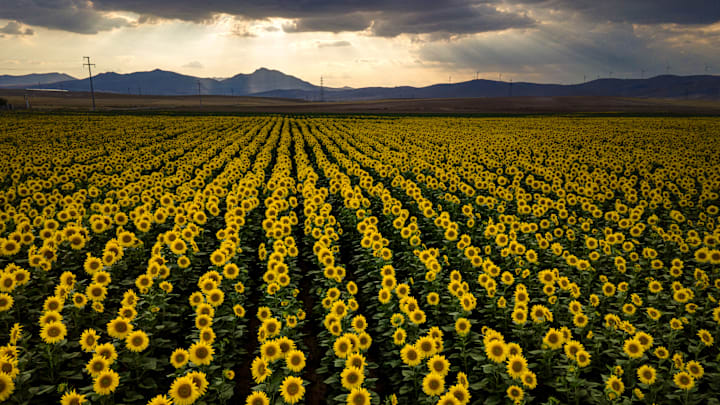The Significance of Grasslands in Global Ecosystems

Grasslands, which cover about one-third of the Earth's land surface, are vital ecosystems that play a crucial role in global biodiversity, climate regulation, and human livelihoods. These vast landscapes, characterized by grasses and herbaceous plants, include prairies, savannas, steppes, and meadows. Understanding the significance of grasslands in global ecosystems is essential for promoting their conservation and sustainable management.
Grasslands are biodiversity hotspots, supporting a wide range of plant and animal species. They provide habitat for numerous mammals, birds, insects, and other organisms, many of which are adapted to the unique conditions of grassland environments. The diversity of species in grasslands contributes to the overall health and resilience of these ecosystems. Grasslands also play a crucial role in maintaining genetic diversity, which enhances the adaptability of plant and animal populations to changing environmental conditions.
One of the primary ecological functions of grasslands is their role in carbon sequestration. Grasslands store significant amounts of carbon in their soils, particularly in their extensive root systems. This carbon storage capacity makes grasslands important for mitigating climate change and reducing greenhouse gas emissions. The preservation and restoration of grasslands can enhance their carbon sequestration potential and contribute to global efforts to combat climate change.
Grasslands also play a vital role in regulating water cycles and maintaining soil health. The deep root systems of grassland plants help to stabilize the soil, prevent erosion, and promote water infiltration. This process enhances groundwater recharge and reduces surface runoff, contributing to the overall health of watersheds. Grasslands also improve soil fertility through the accumulation of organic matter and nutrient cycling, supporting agricultural productivity and ecosystem function.
Human societies benefit from grasslands in various ways, including food production, livelihoods, and cultural practices. Grasslands support agriculture and livestock grazing, providing food and income for millions of people worldwide. The rich biodiversity of grasslands also supports recreational activities, such as wildlife watching, hiking, and ecotourism, which generate income and promote environmental awareness. Grasslands hold cultural and spiritual significance for many indigenous and local communities, forming an integral part of their heritage and identity.
Despite their importance, grasslands are under significant threat from human activities and environmental pressures. Land conversion for agriculture, urban development, and infrastructure projects is leading to the widespread loss and degradation of grassland ecosystems. Overgrazing, invasive species, and climate change further exacerbate the pressures on grasslands, reducing their health and resilience. The loss of grasslands has profound ecological, social, and economic consequences, including reduced biodiversity, increased greenhouse gas emissions, disrupted water cycles, and diminished ecosystem services.
Efforts to conserve and sustainably manage grasslands are essential for mitigating these threats and ensuring their continued provision of benefits. Protecting existing grasslands through the establishment of protected areas, community conservation initiatives, and legal frameworks is a critical strategy. Restoration projects, such as replanting native grasses and controlling invasive species, can help rehabilitate degraded grassland areas and enhance their resilience. Sustainable land management practices, such as rotational grazing and agroforestry, can balance the use of grassland resources with conservation goals.
Engaging local communities and stakeholders in grassland conservation is vital for the success of these efforts. Recognizing the rights, knowledge, and needs of indigenous and local communities ensures that conservation initiatives are socially inclusive and culturally appropriate. Community-based management approaches can empower local people to take an active role in protecting and sustainably using grassland resources. Education and awareness campaigns can foster a greater appreciation of grasslands and encourage sustainable behaviors.
International cooperation and policies play a crucial role in addressing the global challenges of grassland loss and degradation. Initiatives such as the United Nations' Convention to Combat Desertification, the Convention on Biological Diversity, and the Sustainable Development Goals provide a framework for coordinated action to protect and restore grasslands. Financial incentives, such as payment for ecosystem services and carbon offset programs, can support grassland conservation and restoration efforts.
In conclusion, grasslands are vital ecosystems that play a crucial role in global biodiversity, climate regulation, water cycles, and human livelihoods. Their ability to store carbon, support diverse species, and maintain soil health underscores their ecological importance. However, grasslands face significant threats from human activities and environmental pressures. Conserving and sustainably managing grasslands is essential for ensuring their continued provision of ecosystem services and benefits. By recognizing the value of grasslands and taking concerted action to protect them, we can preserve these vital ecosystems for the benefit of present and future generations.